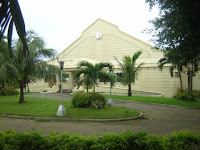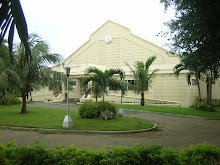
The IGLESIA EVANGELICA UNIDA DE CRISTO or UNIDA CHURCH was born on January 3, 1932 but the seeds that gave birth to it were sown at the turn of the century. It was preceded by the birth pangs of an independent Filipino Nation and emboldened by the coming to the Philippines of Protestantism and consequently the right to read and own a BIBLE.
Protestantism entered when, after 350 years of “abuse, oppression, cruelty, and injustice”1 by Spanish Friars and of prohibition on owning and reading the Bible under pain of death or imprisonment, Spain ceded the Philippine Islands to the United States for twenty million dollars. As the bell of freedom rung throughout the islands. Protestant missionaries came in with lots of Bibles that people can own and read. The HOLY BIBLE was opened to the Filipino people and it was a time of joy and peace, and progress.
It was a breath of fresh air long awaited by the Filipinos. The Americans guaranteed religious freedom and the liberty to worship God without literally paying for it through the nose. “The peace-speaking guns of Admiral Dewey have opened the gates which henceforth make accessible not less than 8,000,000 of people who have for three hundred years been fettered.”2 Thus declared the statement of the Presbyterian General Assembly, in session at Winona Lake, Indiana, in 1898.
The United States established a Civil Government in the Philippines and “The Presbyterian Board felt that political and military relations into which the United states had been so strangely forced with reference to the Philippine Islands……involved certain moral and religious responsibilities…..and that Christian people of America should immediately consider the duty of entering the door which God in His providence was thus opening.”3
For this purpose they decided to transfer Rev. James B. Rodgers, who was stationed in Brazil, to the Philippines. Rev. and Mrs. James B. Rodgers arrived on April 21, 1899. And thus began the spread of Protestant Presbyterianism through him. There were five Protestant denominations in 1903 funded by their American Mission Boards. And through them, many congregations and churches were established
But the spirit of nationalism was awakened in the heart and soul of the Filipinos not only in their political life but more so in their worship of the one true God. Their eyes were opened that Salvation is not by good works and graven idols but by Faith in the Lord Jesus Christ. Indigenous Protestant Churches sprouted right and left, independently of each of other. They built chapels (kapilya) on their own and they existed without financial help from the Americans.
In his book “An Observer in the Philippines ” subtitled “Life in Our New Possessions”, published in 1903 by the American Tract Society, REV. JOHN BANCROFT DEVINS, D.D., Editor of “The New York Observer” wrote in page 265, “It is the belief of many that the Philippine Protestants will soon have not only self-supporting, but also self-propagating churches, and that men in training now will be willing to give a part or all of their time to the work of the ministry, depending upon their converts for support and the erection of churches.”4
And ultimately, the belief mentioned above winnowed only two groups that pursued to be self-supporting and indigenous. One of them is a church composed of six groups that bonded into One, IGLESIA EVANGELICA UNIDA DE CRISTO.
“In addition to three Manila congregations, there were three in Cavite Province, three in Laguna, and one in Pasig, in the province of Rizal. Regular services are also held in six other places and occasional ones in a number of other towns. There are six chapels constructed by the people, in addition to the large native church opened in Manila.”5
Those three churches in Cavite begun by Rev. Rodgers, specifically Bacoor, joined Iglesia Evangelica delos Cristianos Filipinos which together with Iglesia Trinitaria, Iglesia Reformada, and three smallers groups formed IGLESIA EVANGELICA UNIDA DE CRISTO. Rev. Devins narrated a visit with Rev. Rodgers in 1903 to Cavite Viejo and Bacoor in his book pages 282-287. And the old history of Bacoor Unida Church confirms this.

The years that followed saw a people, awakened by nationalism, seeking to be an Independent Nation. Consequently, Filipino Protestant Churches sought to be independent and self-supporting, giving birth to a number of indigenous churches whose converts support the pastors and erect their own churches. It was hard going for them as their pastors were given no compensation and instead gave to the church.
In 1930 a group of them came together at the instance of Don Toribio Teodoro, owner of a shoe factory named “Ang Tibay”, who is a Lay Leader of Iglesia Evangelica de los Cristianos Filipinos and known as “King of Slippers and Shoes”. This meeting was held on November 10, 1930 at 2200 Rizal Avenue, Manila and those who attended were Atty. Prudencio Remigio and the General Superintendents Pastor Gil Domingo of Iglesia Trinitaria, Pastor Moises Buzon of Iglesia Metodista Reformada, and Ob. Victoriano Mariano. After a repast prepared by Mrs. Maria de Jesus Teodoro, they secluded themselves in a room and each one prayed for the Holy Spirit to guide the proposed unification of their three churches.
After their prayers they discussed the proposal and each one consented with the proviso that they will consult their churches about the unification. The consensus in the three churches was for the unification of their indigenous churches.
(To be continued)






